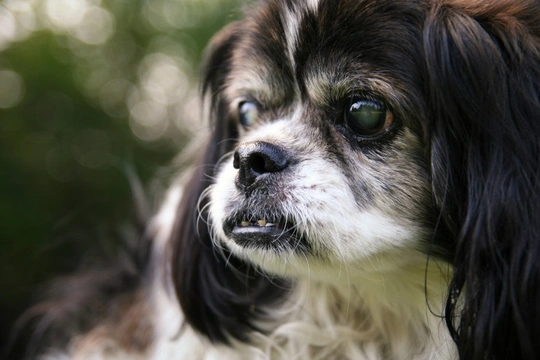
Nuclear sclerosis: A canine eye condition
As dogs get older, they become exponentially more likely to suffer from a range of different problems with their eyes and vision, the most common of which is of course cataracts. However, while many dog owners will assume that changes in the appearance of the eye, such as clouding or taking on a new tint is indicative of cataracts, there are also several other conditions that also need to be considered or ruled out. One of these is nuclear sclerosis, also sometimes known as lenticular sclerosis.
If you own an older dog or simply want to make sure that you would be able to recognise the signs of one of the most commonly underdiagnosed canine eye conditions, this article will provide some basic information and advice on nuclear sclerosis in dogs. Read on to learn more.
More about nuclear sclerosis
Nuclear sclerosis is a condition that causes the lens of the eye itself to become hardened and denser in texture, which in turn serves to limit the amount of light that enters the lens of the eye and causes a scattering effect as it filters through it. It is very uncommon for the condition to affect just one eye at once, and it usually occurs in and develops in both eyes at the same time.
To the owner of the dog, the only obvious change you might see is that the eyes appear to become grey or chalky, which is often how the beginning of cataracts looks, hence the common confusion.
What sort of dogs are affected?
Any breed or type of dog can be affected by nuclear sclerosis, and males and females are equally likely to be affected. The condition is almost exclusively a condition of old age, and it is very rare to see the development of nuclear sclerosis in dogs prior to the time when they reach maturity; and as your mature dog becomes elderly, their chances of developing lenticular sclerosis rise exponentially.
Signs and symptoms
Picking up on the early stages of the development of nuclear sclerosis can be challenging for dog owners, for several reasons. First of all, the condition is one that develops gradually and progressively, which means that on a day by day basis, you are unlikely to notice the ongoing changes occurring in your dog’s eyes.
Secondly, because it generally affects both eyes at once, there is not one “good” eye to use for comparison, which makes gradual changes even harder to identify.
Additionally, because cataracts are another very common eye problem in older dogs and the appearance of cataract development is very similar to that of nuclear sclerosis, the condition is often confused with cataracts.
You will not be able to use many cues and signs from your dog to identify nuclear sclerosis either-the condition is not at all painful, and so your dog will not appear to be bothered by the changes in their eyes and will not show any signs of pain.
Additionally, while nuclear sclerosis can affect the vision of the dog in question, this is not always the case; and even in cases where the vision is compromised, this is not likely to occur to any great extent and so your dog will not be likely to start bumping into things or acting as if they cannot see-unless of course, they have another condition affecting their eyes too, which does lead to these side effects.
Can the condition be treated?
Nuclear sclerosis in dogs cannot be treated or reversed, and it is generally accepted that once it has begun, it will continue to progress throughout the remainder of the dog’s life. Because it is a condition that accompanies old age and it develops slowly, generally the dog will reach the natural end of their life before the condition can have any meaningful impact on them, as is sometimes the case with progressive degenerative conditions in older dog.
However, it is important to note that in the greater scheme of things, nuclear sclerosis is not a major problem or concern, as it is not painful, rarely affects the vision, and so, will not generally have a negative impact on your dog’s quality of life or wellbeing.
That being said, it is still important to take your dog along to the vet and get the condition diagnosed-because it is so easily confused with cataracts, which are treatable and can lead to blindness, it is important to find out for sure one way or the other.
Can nuclear sclerosis be prevented?
Nuclear sclerosis in dogs is not one of those conditions that come about due to any oversight by the owner; it is not affected by diet or any other factors that often affect the health of dogs, and there is no way to identify a propensity to the condition within certain breed lines before it occurs.
In terms of general canine eye conditions and those associated with aging, nuclear sclerosis is one of the more benign conditions, and is not of great cause for concern to either the dog or the owner.



